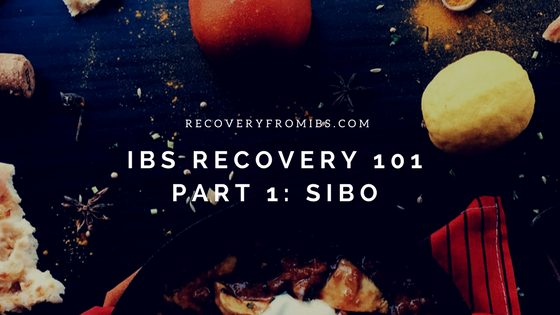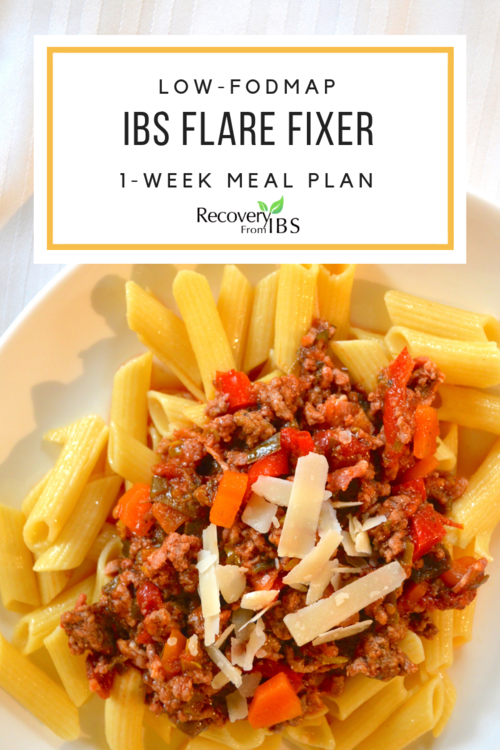An overview of SIBO (Small-Intestinal Bacterial Overgrowth)
If you have IBS, don’t miss this! I’ll be describing how to feel better inside of a week at the end of this post sharing an overview of SIBO (the signs, symptoms, causes, testing, interventions, treatment, and maintenance of remission).
If you’re just finding your way to my website, my name is Erin Skinner. I am a Registered Dietitian trained in integrative and functional nutrition. I have a private practice where I specialize in treating IBS.
This is the first of a 3-part series on IBS – the causes, testing, treatment, and maintenance.
The first IBS culprit that I’ll discuss in this series is known as SIBO, which stands for small-intestinal microbial overgrowth.
What is SIBO?
SIBO is the overgrowth of bacteria from your colon into the small intestine. Usually the small intestine should be nearly sterile, so a bacterial overgrowth causes problems. Specifically, the bacteria there digest fiber from your food, and produce gas as their waste product.
That gas causes bloating, pain, gas, reflux, cramping, diarrhea, and/or constipation, yikes! It can also cause systemic symptoms like fatigue, joint pain, brain fog, headaches, and fibromyalgia.
SIBO Causes
SIBO can be caused by a variety of things, and I’ll name the most common.
- The first is food poisoning. You can actually test whether this is the cause by getting a test of the antibodies produced by the food poisoning.
- Another common cause is immune suppression caused by chronic stress and/or sleep deprivation.
- A third factor that can contribute to SIBO risk is low stomach acid, most commonly caused by taking acid-blocking or reducing medications.
- Finally, a common cause of IBS is poor gut motility, or slowed movement of food through the small intestine. This can be caused by either neurological impairment of the vagus nerve or by abdominal adhesions. Adhesions can be caused by abdominal surgery or trauma, such as a big fall or car accident.
How to test for SIBO
So, you may be wondering how to test for SIBO. It can be diagnosed fairly accurately using something called a breath test. Basically, you drink a solution of bacteria ‘food’, then take breath samples to measure gas levels. There are glucose and lactulose versions. I use a lactulose test that tests for both kinds of bacteria – those that produce methane and those that produce hydrogen. Test interpretation is tricky, so make sure that you get a credentialed provider to interpret your test. That way, you ensure that you get an accurate reading.
SIBO Treatment
So, how do we treat SIBO? There are basically three options. Again, you should work with a professional to decide on the best fit for you, and to help guide your treatment.
- One option for treatment is an elemental diet. You basically drink a formula for a few weeks instead of eating. This treatment is the most difficult and expensive, but also the most effective.
- The second option is a special kind of prescription antibiotic. These are not absorbed and, thus, only work in the gut. It can be hard to find a physician who will prescribe them but they can be effective if used appropriately.
- The third and final option is an herbal antimicrobial protocol. These dietary supplements don’t require a prescription, and are just as effective as the prescription antibiotics. However, they do take about twice as long to work.
Along with these treatments, a SIBO-specific diet should be followed. An experienced functional medicine clinician can recommend a protocol that is specific to you and your case.
SIBO Maintenance
Finally, let’s discuss how to maintain SIBO recovery. Even if you aren’t sure that you have SIBO, or if you’re getting treated, these are important points to focus on. Specifically, it’s important to improve your sleep, your diet, and your stress levels. Exercise should also be at the correct volume and of optimal types. Again, a functional medicine practitioner can guide you based on your specific case and underlying causes.
Conclusion
There’s the quick and dirty on a common underlying cause of IBS: SIBO. If you’d like to learn more, feel free to contact me. Also, don’t miss the free meal plan below! It will get you feeling better inside of a week, and it is appropriate for SIBO.
Finally, if you know someone who has IBS, please share this post with them. Thanks for reading and please share a comment if you have questions or experience with SIBO!
Note: Don’t miss part 2 of this series – Dysbiosis – and part 3 – Leaky Gut !
Bonus!
Don’t miss my FREE one-week ‘IBS Flare Fixer’ meal plan! It’s low-FODMAP, nutrient-dense, easy, and delicious!
It’s your ticket to try Low-FODMAP (done right) without having to figure it all out first.
It’ll have you feeling better inside of a week (especially if you have SIBO)!
Gimmie The Free SIBO Meal Plan!
Best wishes,
Erin Skinner, MS, RD, CPT, IFNCP
Integrative and Functional Registered Dietitian Nutritionist

P.S. Want to know if we’re a good fit for improving your digestive health? Contact me HERE to set up a free chemistry call!


